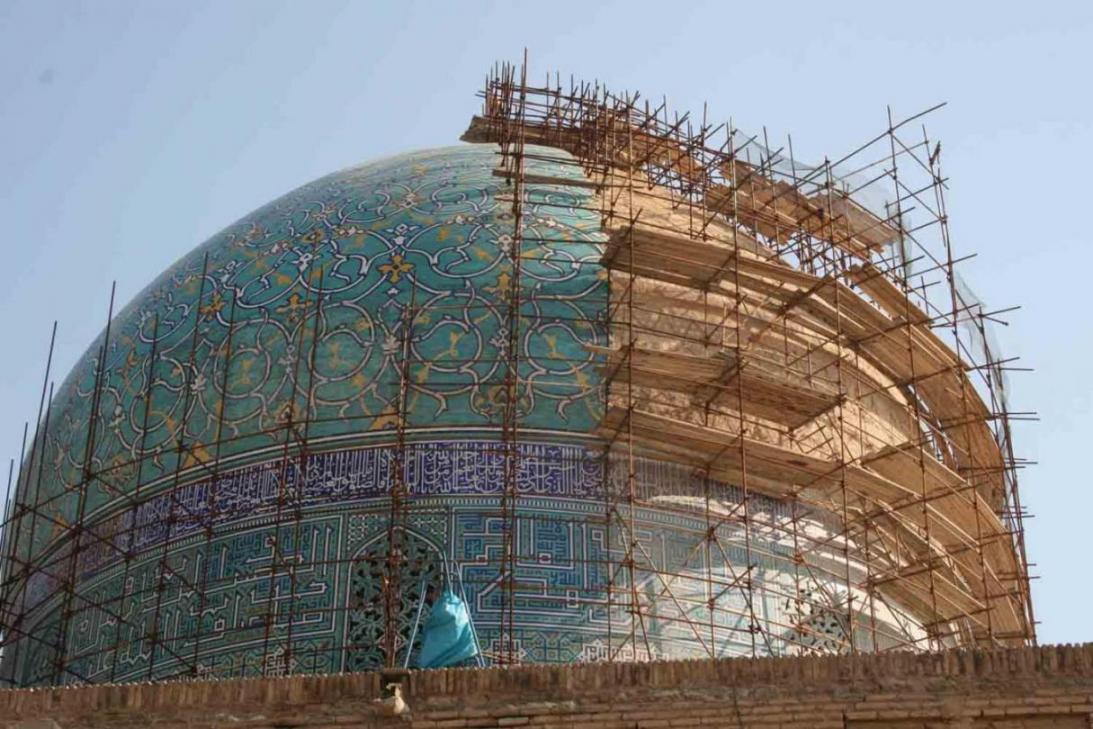The Fund for Restoration and Administration of Historical and Cultural Places has set itself the goal of restoring between 25 and 30 historical buildings by the end of the current Iranian year that ends in March 2017. This means at least two buildings each month will be restored and function as unique traditional hotels, restaurants, inns and lodging places.
The director of the fund made the statement this week at the Royal Dishes Museum at Sa’adabad Complex on the occasion of the International Day on Monuments and Sites.
“Our target is to sell almost 100 buildings to the private sector for restoration each year which means a total of 1,084 buildings will be ready for use by the end of the Vision Plan 2025,” Muhammad Reza Pouyandeh was quoted as saying by the Persian newspaper Donyay-e Eqtesad.
The fund has been tasked by the government to cede 150 buildings this year while the set target was 100, which indicates the extra attention that is being directed at rehabilitating historical buildings.
Before the present government took office in 2013, only 13 buildings were ceded and during the first two years of Hassan Rouhani’s administration barely five were sold to private investors. This is while over the past year, the number of ceded buildings has seen a 600% increase and investments have grown ten times. According to the newspaper, 101 buildings went under the hammer of which 31 were given to the private sector last year.
In response to why only 31 were handed over, the technical manager of the fund said that the reason is lack of knowledge about the capacity of such investment.
Abbas Palizban maintained that this is a win-win situation because cultural heritage is being protected and revived while also generating profit for investors and businesses.
However, no budget has so far been allocated to restoration projects from the National Development Fund of Iran. “We have had talks with the investment deputy at Iran’s Cultural Heritage, Handicrafts and Tourism Organization to be able to get some share of the NDFI,” said Pouyandeh.
In addition to financial benefit, the privatization program will create direct and indirect jobs. As many East Asian and European tourists normally prefer to stay in historical buildings, the heritage sites turned into hotels would help address lodging shortages in the towns and villages, said Pouyandeh referring to the benefits of restoring and redeveloping the large numbers of ancient sites.
Explaining the process, he said buildings owned by the ICHHTO are sold after their specifications have been filed and permission has been granted by the government. But those that are in private ownership or endowments are purchased by the ICHHTO before being put up for auction.
Functions
Around 130 to 140 functions have been envisioned for these sites which will be decided based on the building’s conditions and location, economic feasibility, investor demands and infrastructure. The technical council is responsible to study the overall conditions and inform the investor which function is appropriate for a particular historical site.
Foreign Investment
To attract foreign investment, the fund has prepared investment packages for visiting foreign delegations and Tehran-based foreign diplomats.
“The Italian delegation warmly welcomed the idea mainly due to the fact that these packages are often lower in cost than other investment opportunities,” said Pouyandeh adding that investment in restoration programs “does not require more than one to two million dollars.”
The organization’s marketing programs include direct negotiations, offering advertisement packages and participation in international tourism expos, said Ali Kazemi, the investment deputy at the fund.
However, there are hurdles to investments. The common belief among property owners that national inscription will deny them the right of ownership is one major problem hindering access to ancient and historical buildings and places. Government and municipality taxes are other factors that discourage investors from putting their money into such projects, said Pouyandeh calling for reform in the rules and regulations guiding the handover/sale process.
Another constraint is that many buildings and sites are located in not very popular towns and rural areas that are not profitable for investors. The statute of the fund puts it in charge of the restoration programs that should be paid from its own budget. However, it does not have enough money for the rehab.
Supervision
The director of the fund said that the sites would be sold only to qualified companies and individuals that meet at least 60 out of 100 required conditions. The technical manager of the fund noted that inspections will be undertaken by provincial offices of the ICHHTO and inspectors from the fund who will monitor the restoration procedures on a regular basis.
The companies and the contracting parties are required to present daily, weekly, monthly and yearly reports on their work, said Palizban.


